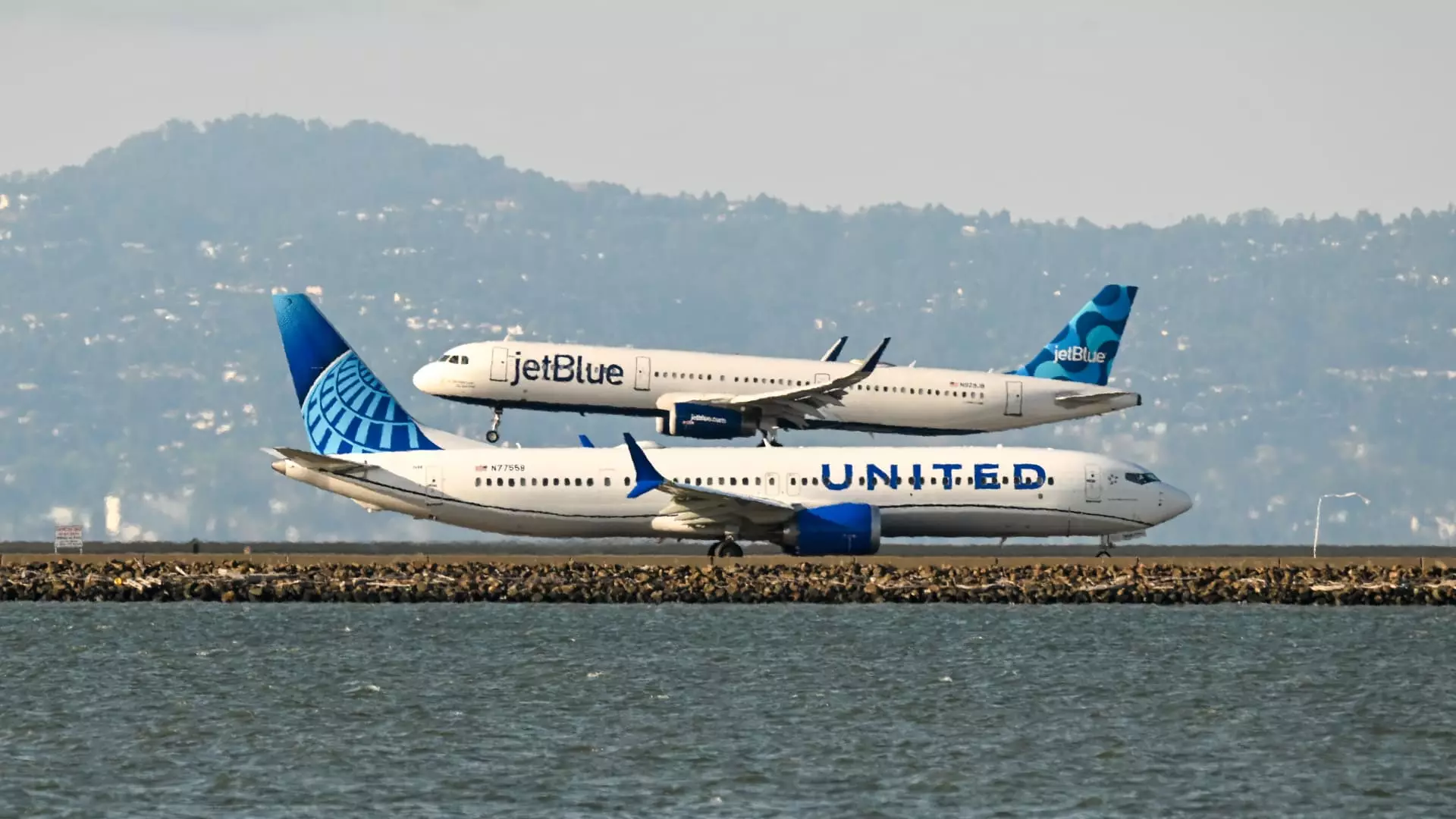In an era where airlines are continuously vying for market dominance, United Airlines has made headlines with its decision to partner with JetBlue Airways, marking a significant return to New York’s John F. Kennedy International Airport (JFK). This bold move, branded as the Blue Sky partnership, offers more than just business advantages; it promises enhanced travel options for passengers. By allowing mutual access to both airlines’ flights and leveraging their combined strengths, United can reclaim a piece of an essential market — a strategic pivot that reflects a growing recognition of JFK’s importance in the competitive aviation landscape.
This isn’t simply about business logistics; this partnership is a clear acknowledgment of past mistakes. When United exited JFK in 2015, it paved the way for competitors, particularly American Airlines, to capture valuable corporate clientele. United CEO Scott Kirby has called this move a miscalculation, realizing only now that regaining a foothold at one of the world’s busiest airports is essential for long-term competitiveness.
Elevating Customer Experience: A Win for Frequent Flyers
In a time when consumer loyalty is increasingly difficult to capture, the Blue Sky partnership aims to provide tangible benefits to frequent flyers. From shared loyalty programs to priority boarding and more comfortable seating arrangements for elite members, the collaboration serves to enhance the overall travel experience. This customer-focused approach demonstrates a significant shift in how airlines are viewing their business model, increasingly prioritizing the passenger experience over mere operational efficiency.
This is a critical move in a market where larger airlines can afford to lose touch with their customer base. By integrating their offerings, both United and JetBlue are attempting to create a more hospitable environment for travelers who seek not just affordability, but a seamless travel experience. When travelers see airlines working together for their benefit, it fosters a sense of trust and loyalty that can yield long-term rewards for both carriers.
Competing with Giants: Tactical Alliances
United and JetBlue’s new alliance is also a strategic response to the overwhelming presence of larger players like Delta Air Lines, currently the most profitable airline in the United States. Both United and JetBlue have recognized the need for collaboration to offer competitive services, and they’ve devised a plan that enables them to punch above their weight.
In essence, this partnership is a direct acknowledgment that competition among airlines is no longer a solo expedition. The aviation landscape has evolved; smaller airlines must look to forge alliances to level the playing field. As this trend continues, we can expect to see more partnerships that prioritize not only financial outcomes but customer experiences.
Regulatory Scrutiny: A Bitter Pill to Swallow
However, the partnership isn’t without its hurdles. The deal is subject to regulatory review, which brings about uncertainty. Previous attempts at collaboration, such as JetBlue’s ill-fated alliance with American Airlines, were thwarted by federal courts over antitrust concerns. It raises the question: will regulators view this partnership as a potential monopoly or a beneficial alliance for consumers?
In a landscape increasingly scrutinized by regulatory bodies, the airlines must navigate this tricky terrain carefully. The potential for increased choice and access for consumers is clear, but so is the question of ensuring that competition remains healthy and vigorous.
Projected Industry Impact: A Fresh Start
One undeniable aspect of this partnership is its potential impact on the entire airline industry. With United returning to JFK in 2027, the ripple effects could influence not just domestic routes but international offerings as well. United’s ability to fly up to seven daily round-trips at JFK positions it to compete for high-value corporate customers against American and Delta.
Moreover, the collaboration can enhance JetBlue’s routes in Newark, promising similar benefits for its loyal customer base. This arrangement not only diversifies route options but can also challenge the operational norms established by larger airlines. In a business environment constantly seeking innovation, this partnership is both timely and ambitious.
United Airlines’ new venture with JetBlue is much more than a strategic alliance; it’s an opportunity to redefine the customer experience in air travel while maneuvering through a rapidly changing industry. The “Blue Sky” initiative could ultimately catalyze a shift in how airlines approach their services and partnerships, reflecting an adaptable and customer-centric future.

